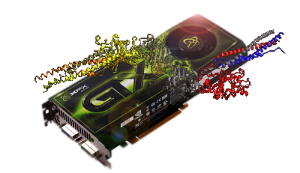Research¶

Molecular interactions underly some of the most fundamental processes in biology, including protein degradation, cytoskeletal support and cell motility, cell adhesion and formation of extracellular matrix, muscle contraction and relaxation, blood clotting, membrane fusion, and life cycle of plant and animal viruses. Biomolecular coupling is intrinsic to every cellular process such as ligand binding, and protein misfolding and aggregation. Yet, little is known about how these interactions in ligand-receptor complexes and protein oligomers trigger their cooperative response to the external factors at the submolecular level. It is not yet understood how domain interactions in large-scale biological assemblies contribute to their structural stability and functional integrity (physiological properties), and how domain coupling brings about a broad spectrum of their dynamic behavior ranging from continuous transitions (sliding, conformational states) to “all-or-none” transitions (unfolding, unbinding, and structural failure), and to phase transitions (buckling of viral shells).
The complexity of biological systems and the long scales of time and length of the physiological processes they are involved, render the fundamental understanding and the theoretical interpretation of experimental measurements difficult without first having some a priori information about their free energy landscape. Theory and simulations are becoming increasingly more important in providing some basic understanding, but the challenge is that molecular simulations have to be performed in the biologically relevant microsecond to second timescales. All-atom MD simulations on CPU are currently limited to \(10-50\) nm length scale and \(0.1-10 \mu s\) duration. In this regards, graphics processors or Graphics Processing Units (GPUs) are emerging as an alternative programming platform that provides high computational power for a range of scientific applications including the biological \(N\)-body problem. It is becoming more apparent that GPUs might hold a potential to enable researchers to carry out simulations at the petascale lavel in the foreseeable future. We believe that, with the GPU-based computing at our disposal, many revolutionary advances in biology will be realized, and new concepts and theories will be developed.
Biological Applications:
- Mechanical properties of protein fibers
- Biomechanics of fibrin fibers
- Mechanical transition from \(\alpha\)-helical coiled coils to \(\beta\)-sheets in fibrin(ogen)
- Dynamic behavior of plant & animal viral capsids
- Microtubule biomechanics and tubulin bond energies
- Computational drug discovery
- Kinetics of formation/dissociation of biomolecular complexes
- Transition from “catch” bonds to “slip” bonds in cell-adhesion systems
Theory:
Computational methodology